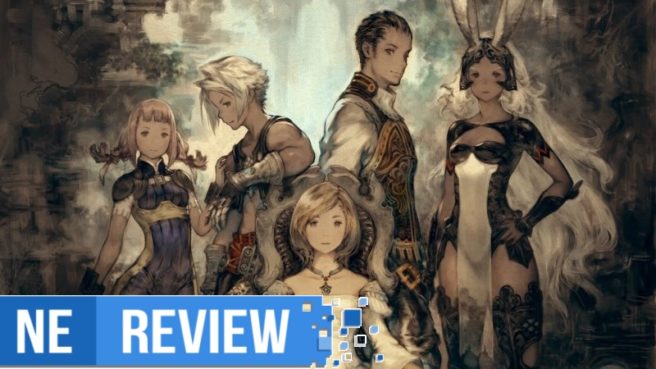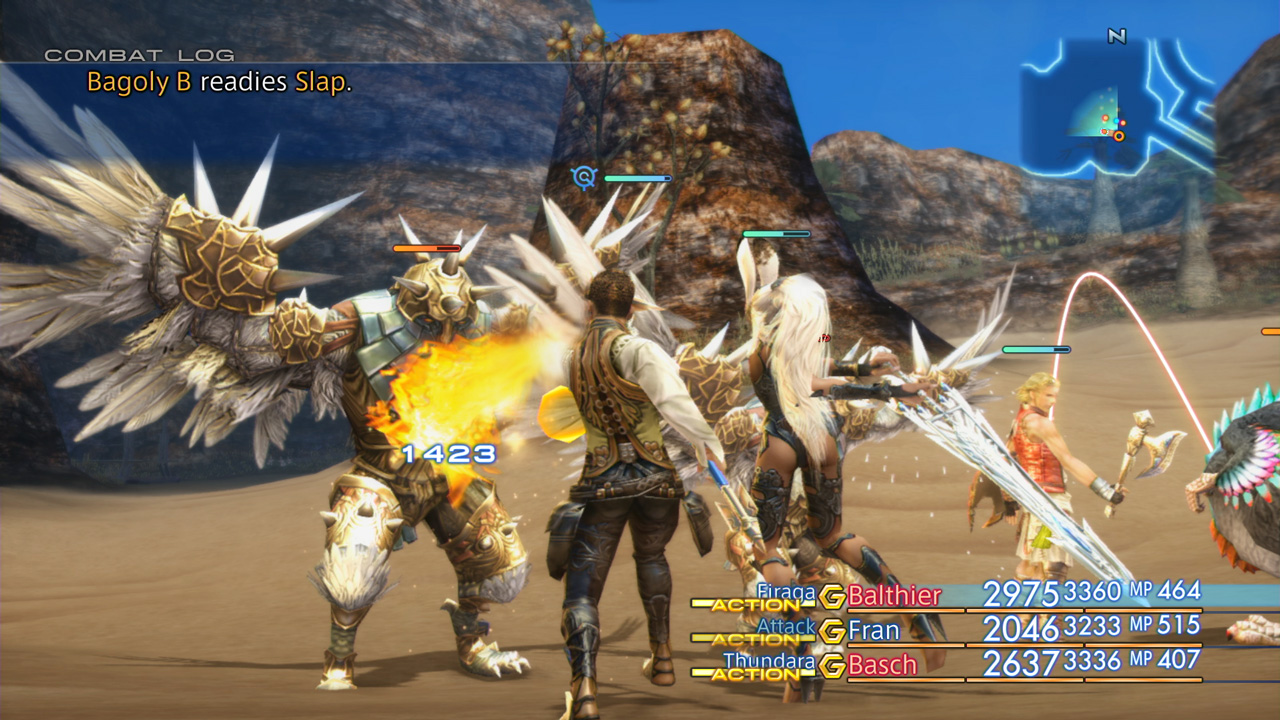[Review] Final Fantasy XII: The Zodiac Age
There’s no denying that combat can be difficult to come to grips with at first. Final Fantasy XII is more about planning ahead with your Gambit setup rather than reacting to every situation as they come, which can be tricky to get used to if you’re accustomed to more traditional Final Fantasy gameplay. Although you start out with a fairly limited selection of Gambit options, it’s not long before you’re practically inundated with new Gambits to fit into your strategy. This sheer quantity of potential tactics can make combat seem overwhelming at times, but once you get the hang of it, then the game becomes a delightful playground of combat potential. The beautiful thing about the Gambit system is how it takes the panic out of most battles. You don’t need to worry about healing your allies or exploiting an enemy’s elemental weakness; if you’ve set up your Gambits correctly, your party will take care that automatically, which can leave combat feeling like a strangely Zenlike experience. Of course, Gambits can’t always do all the work for you, and when battles get more intense, it may be better for you to manually take control of your party’s actions and command each and every movement. You can even turn Gambits off entirely if you want to, although this certainly isn’t recommended since the game’s entire flow is focused around Gambits. The battles may have been divisive at Final Fantasy XII’s inception, but in 2019, they may be the aspect that have aged the best.
The battle system also shows off some of the best additions made to this specific re-release of the game. Firstly, you can now have up to three sets of Gambit slots per character. This is a godsend for managing your party, allowing you to flip on the fly between your character’s strategies in battle. This grants you an impressive amount of flexibility with its combat. You can have one Gambit set for a character when you want them to focus on physical attacks, another for elemental attacks, and another for supporting roles, all of which you can switch between at any time depending on what the situation calls for. Another important change is made in the progression system. In order to use a spell, equip a piece of armor, or use a specific weapon, you’ll need to have the appropriate license to do so, which can be obtained on a set of License Boards. These boards function as job progression trees like the Sphere Grid in Final Fantasy X. You are given the ability to pick which license board you’d like to place each character on, and in previous releases, this decision was permanent. The choice about which license board you assign for each character was an important one back in the game’s previous releases, but with this latest remaster, you now have the ability for a character to switch job classes. Of course, most license boards are fairly similar to one another and well-balanced to boot, so you really can’t make too bad of a decision with any character, but if you’re like myself and constantly plagued with uncertainty over early-game decisions in your RPGs, then this added flexibility will come as welcome news.
Of course, the game’s presentation has also seen an overhaul to prepare it for HD consoles. Simply put, Final Fantasy XII is magnificent on Switch. Its impressive scale looks absolutely majestic in high definition, with every open vista and crowded city now rendered in sharp detail. The visuals are often so impressive that it can be hard to believe that this game originated on the PS2. With this new high-resolution coat of paint, it looks better than many other current-gen Japanese games. This all holds up beautifully on Switch, with it being particularly eye-popping in docked mode. Some environmental textures do seem to be a bit blurry, but in motion the game still looks fantastic. It looks great in handheld mode as well, although it can’t be denied that the resolution takes a fairly dramatic hit, resulting in a much softer image. No matter whether you’re playing handheld or docked, performance is never an issue – it maintains a perfect 30 frames per second between both modes, regardless of how hectic the battles become. Its boisterous soundtrack has also been fully remastered, with a total of three audio options to choose from: the original synthesized music, an “OST” mix of the original, and a brand-new orchestral re-arrangement of the music done specifically for this remaster. All of these options have their own merits, each offering a different but equally enjoyable take on the bustling music. It’s packed with memorable pieces, from the gently noble Rabanastre theme to its thundering boss battle themes. Perhaps its original melodies aren’t quite as unforgettable as other games in the series, but its arrangements of classic Final Fantasy songs are all fantastic – its version of the series’ main theme is perhaps the finest in the franchise.
The Verdict
Final Fantasy XII has never been better than it is on Switch. Its gameplay is more strategic, convenient, and satisfying than ever thanks to its impressive amount of quality of life additions, from the ability to create even more tactics with the additional gambit sets to the new flexibility of its progression system. Likewise, its remastered music and visuals are nothing short of stunning, even if the game can get a bit blurry in handheld mode. If you can get past the initial confusion of its battle tactics and the convoluted politics of its early plot, you’ll find an experience that has been masterfully refined, with an engagingly human story and a combat system that’s only gotten better with age. It’s been a long time coming, but Final Fantasy XII: The Zodiac Age has seen its definitive release on Switch.
Final Fantasy XII: The Zodiac Age review copy provided by Square Enix for the purposes of this review.


